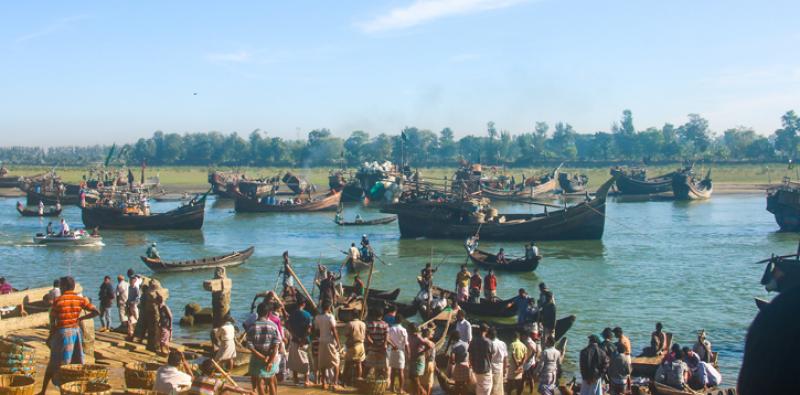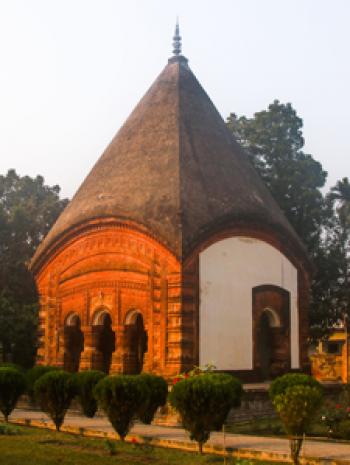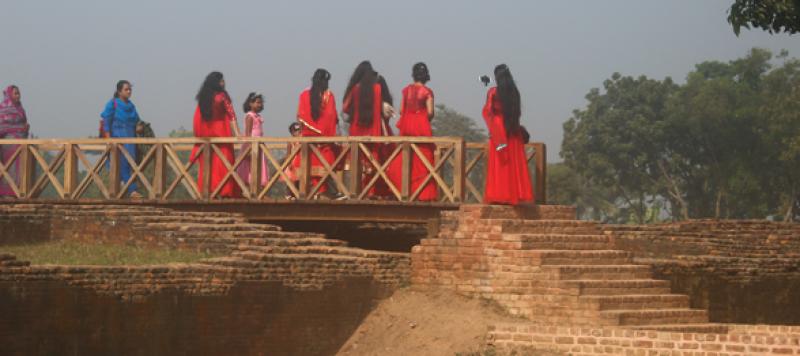Challenges & rewards of Bangladesh travel
This item appears on page 15 of the June 2017 issue.
Most Americans know nothing about Bangladesh, although some may remember the 1971 Concert for Bangladesh (organized by Ravi Shankar and George Harrison) that provided aid to that country, which was reeling from a devastating cyclone and the beginnings of a civil war (the Indo-Pakistani War of 1971) that would result in as many as three million deaths.
While few have visited that area of the world, such a visit is rewarding to the traveler and very helpful to the country.
The land that would become known as Bangladesh separated from India in 1947, when Muslims achieved their own state, Pakistan. At that time, what we know today as Pakistan also included the eastern, Muslim-majority part of former British India, then called East Pakistan. In December 1971, the two parts of Pakistan went their separate ways, with the eastern portion renamed Bangladesh.
Today, the country is poor, it’s subject to natural disasters (especially high winds and flooding) and it has inadequate infrastructure, so internal travel is slow. Travelers must look beyond these things.
I traveled through Bangladesh on a private, 11-day tour, Dec. 6-16, 2016. About three months before, I began searching online for tour agencies in Bangladesh. I discovered Green Bangla Tours (House 04 [1st Floor] Road 11, Sector 11, Uttara Model Town, Dhaka 1230, Bangladesh; phone +880 1819 420221, www.greenbanglatours.com). My contact person was Halim Kahn, the owner of the company.
Upon my arrival, Halim met me at the Shahjalal International Airport, in the country’s capital of Dhaka, and took me to the nearby Hotel Afford Inn (House 4, Road 3, Sector 1, Uttara, Dhaka; www.hotelaffordinnbd.com), which was clean and comfortable.
I spent the first day touring the teeming capital and sampling the food. The people were friendly, and the capital buzzed with activity and commerce. Alcohol was available at only a few tourist venues.
Halim’s 26-year-old son, Salman, guided me for the remainder of the trip. First we flew to Cox’s Bazar, where one can spend a lot of leisure time on a 75-mile-long beach, but we set off to see Buddhist temples and centers and tropical jungles in the Bandarban District of the Chittagong hill tracts.
Access to these hill tracts required multiple special permits, but Salman did his magic, and a variety of ethnic communities — with different dress, customs and religions — made their appearance.
We then drove to Chittagong, the country’s second-largest city, for a day, seeing Muslim shrines and graves of World War II soldiers from many nations, including Japan. An afternoon train ride to Dhaka gave us a view of country life (and certainly beat driving for hours).
After spending a night in Dhaka, we visited markets, sampled foods and took a Rocket paddle steamer to Hularhat near the Bay of Bengal. River travel was the principal means of transport before the British came, and it still seems a pretty good option, especially with the views of the country and its people.
We traveled by car to the port of Mongla, which had a comfortable hotel, good food and interesting river views and crossings. (As a 71-year-old, I don’t like to stand on boats without railings, and the boats we traveled on had none.)
Mongla is a major port, but it’s also the springboard for the Sundarbans region, where visitors may be able to see wild tigers. While on a boat tour of the area, we saw a monitor lizard feeding on a deer. We also took a walk on the Monkey Trail at the Caramel Ecotourism Centre.
From Mongla, we went north toward the Rajshahi District to visit three major sites: the relatively unknown palaces and temples of Puthia, which recalls the Hindu influence that was largely lost after the 1947 partition (only 9% of Bangladeshis are Hindu); the UNESCO World Heritage Site of Paharpur with its 8th-century Buddhist monastic ruins, and the ancient city of Mahasthangarh, first occupied in the 3rd century BC.
Seeing all of these in one day was mind-bending and helped me sleep on the long trip back to Dhaka.
I took my leave of my wonderful guides, the Kahns, after another trip around Dhaka on the final day. It was a holiday celebrating liberation from Pakistan, and people were celebrating and happy.
My tour cost about $1,800, excluding airfare but including hotels and meals. It was a real bargain!
There is much beauty to be seen in the land and people of Bangladesh. I would be happy to discuss the place and share photos with anyone interested in making the trip. I can be reached at esulliva@gmail.com (note spelling).
EDWARD J. SULLIVAN
Portland, OR



